How to Make Healthy Pizza Dough? Healthy Pizza Dough Recipe

When you're aiming for a healthier pizza dough, pick the right flour.
Whole Wheat Flour:
● Nutrition: Rich in fiber and nutrients, whole wheat flour is a wholesome choice for your pizza base.
● Baking: It will give your pizza a denser texture compared to white flour, if you don't like the texture you need to adjust hydration levels.
Gluten-Free Options:
● Ingredients: Common gluten-free flour options include rice flour, buckwheat, or a pre-mixed gluten-free blend.
● Considerations: Gluten-free flours usually require a binding agent like xanthan gum to mimic the elasticity of gluten.
Almond Flour:
● Low-Carb: Perfect if you're keeping an eye on carbs, almond flour is both nutritious and filling.
● Texture: Expect a heartier bite, as almond flour doughs are typically more tender and less chewy.
Cauliflower Crust:
● Veggie-Filled: A creative way to sneak in veggies, a cauliflower crust is surprisingly delicious.
● Baking Tips: Be sure to squeeze out as much moisture as possible from the cauliflower to prevent a soggy crust.
How to Make a Healthy Pizza Dough?
Making a healthy pizza dough can be simple and can contribute to your overall nutrition and health goals. By choosing the right ingredients, you can infuse your pizza with beneficial nutrients.
Incorporating Protein and Fiber

To boost the protein in your pizza dough, consider adding low-fat plain Greek yogurt. Greek yogurt is not only rich in protein, but it also brings moisture and a slight tang to your dough.
Here's a quick look at how you might modify a basic pizza dough recipe:
● Whole wheat flour: Higher in fiber than white flour.
● Greek yogurt: Adds protein; use instead of water for mixing the dough.
Reducing Sugar and Calories
To reduce unnecessary sugar and calories in your pizza dough, minimize or eliminate added sugars. You don't need sugar to make a tasty dough.
Here are a couple of tips:
● Avoid adding sugar: Let the natural flavors of your ingredients shine.
● Choose nutrient-dense flours: Opt for stone-milled or whole grain options like type 1 flour.
Selecting Healthy Toppings

Vegetables and Lean Meats
Go to get a mix of vitamins and minerals. Consider these options:
● Spinach: A strong source of iron
● Bell peppers: Packed with vitamin C
● Arugula: A peppery green, high in calcium
● Mushrooms: Great for a meaty texture without the fat
● Red onions: For a kick of flavor and antioxidants
Lean meats are essential for adding protein while keeping calories in check. Choose these:
● Grilled chicken: A high-protein option that's low in fat
● Turkey pepperoni: Fewer calories and less fat than traditional pepperoni
Pair these toppings in any combo you like for a pizza that's as good for your body as it is for your taste buds!
Choosing the Right Cheeses
Cheese can make or break the healthiness of your pizza. Here's how to choose wisely:
● Mozzarella cheese: It’s the classic pizza topping for good reason; it's naturally lower in fat and calories.
● Parmesan cheese: Flavorful, so a little goes a long way.
● Feta cheese: Brings a tangy punch and has fewer calories than many other cheeses.
● Goat cheese: It's soft and creamy with less lactose, which can be easier to digest.
Homemade Sauce Perfection
Creating the perfect sauce for your homemade pizza is like adding the ultimate finishing touch to your creation. Each sauce brings its own unique flavors and can be customized with a variety of herbs and spices to match your taste buds perfectly.
Tomato vs. Pesto Pizza Sauce
Tomato Sauce: A classic choice for pizza, tomato sauce is loved for its rich and tangy profile. To make a healthy version, opt for fresh tomatoes or unsweetened canned tomatoes. Start by sautéing minced garlic in a bit of extra virgin olive oil until fragrant. Then, add your tomatoes, crushing them if they're whole, and simmer to your desired thickness. For a smoother sauce, blend after cooking.
● Ingredients:
○ Fresh or canned tomatoes
○ Garlic
○ Extra virgin olive oil
Pesto Sauce: If you want to venture past the traditional, pesto is a bright and herby alternative. Blend together fresh basil, garlic, pine nuts, Parmesan cheese, and extra virgin olive oil until you reach a smooth consistency. Pesto adds a punch of flavor and a twist to your pizza with its combination of fresh herbs and nutty undertones.
● Ingredients:
○ Fresh basil
○ Garlic
○ Pine nuts
○ Parmesan cheese
○ Extra virgin olive oil
Herbs and Spices for Flavor
Enhancing your sauce with herbs and spices is a simple way to elevate your pizza. For tomato sauce, traditional seasonings include dried oregano, basil, and a pinch of red pepper flakes for heat. Fresh herbs should be added towards the end of cooking to preserve their flavor. Pesto already contains basil, but you can experiment by adding a small amount of rosemary or thyme for an extra layer of taste.
● Tomato Sauce Seasonings:
○ Oregano
○ Basil
○ Red pepper flakes
● Pesto Sauce Add-ins (Optional):
○ Rosemary
○ Thyme
Healthy Pizza Dough Recipe From Pizzello

Ingredients
● 1 cup self-raising flour (250ml, can use white or whole wheat)
● ½ cup Greek yogurt (125ml)
Instructions
● Mix flour and yogurt together until a smooth dough forms
● Roll out on a floured surface
● This amount makes either 1 large or 2 medium-sized pizzas
● Add your preferred toppings
● Bake in your oven at 180°C (350°F) for 10 minutes (may need 1-2 minutes more for non-fan forced ovens)
Frequently Asked Questions
Is it possible to create a pizza dough without yeast that's still healthy?
Absolutely! For a yeast-free option, you can use baking soda or baking powder as leavening agents. This gives you a pizza dough that is still fluffy and palatable. You can also add pureed veggies, such as pumpkin or sweet potato, for extra nutrition.
What's the healthiest type of flour to use for making pizza dough?
One of the healthiest flours for pizza dough is stone-milled type 1 flour. It retains more nutrients than heavily processed flours and gives your pizza an extra health kick. Whole grain flours in general tend to be nutrient-dense, making them good choices for health-conscious pizza lovers.
Are there any three ingredients for healthier pizza dough?
Certainly, one popular three-ingredient recipe includes whole wheat flour, Greek yogurt, and a pinch of salt. This combination yields a healthy, protein-rich pizza base that's easy to make and offers a tangy flavor reminiscent of sourdough.


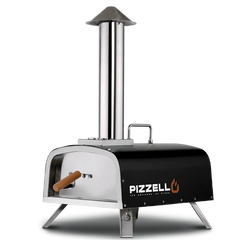
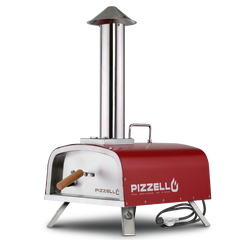
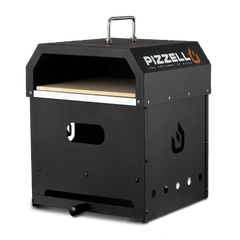
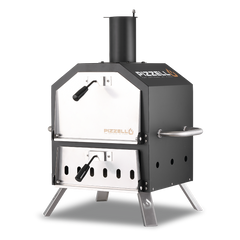





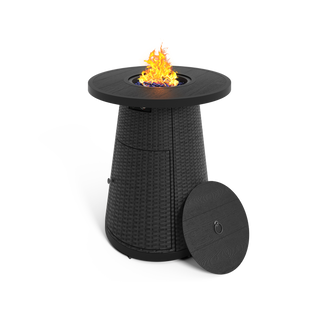

 Aluminum Dining Table
Aluminum Dining Table
 WPC Dining Table
WPC Dining Table
 Cart
Cart
 Gas Burner
Gas Burner
 Pizza Oven Door
Pizza Oven Door
 Hat
Hat
 Apron
Apron
 Swivel Rocker Set
Swivel Rocker Set
 Textilene Chairs
Textilene Chairs
 HDPE Chairs
HDPE Chairs
 Wicker Counter Height Barstools
Wicker Counter Height Barstools
 Metal Counter Height Barstools
Metal Counter Height Barstools


























